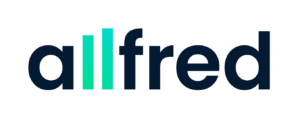All creative agencies announced their uniqueness to the world at some point, whether that would be in their creative conceptualisation, client management or AI innovation. While this tune might be overplayed for many, the fact remains that each agency manages their internal workflow operations in different ways in order to produce their best quality work. That is the point that differentiates them from others which is also a topic our CEO Marek Mrázik dwelled into in his recent podcast episode with GYDA – a collection of agency experts.
Table of Contents
But first, let’s point out….
…why is smooth workflow in agencies so important?
If you have experience working in a creative agency, you know that improving internal operations is the key to a successful business when dealing with so many different departments involved in a project. This requires not only a sharpened task management but also standardized processes and clear communication flowing between various teams and the senior leadership.
Increased Efficiency
One of the most common issues agencies face is a hiccup in communication process, both internally in-between teams and externally with clients. This can result in budget issues and wasted resources which is not a fun conversation to have with your boss or your client. Improving how your agency is running internally can not only prevent that but also eliminate such situations while delivering projects faster and more cost-effectively.
Improved Quality
On top of that, agencies can ensure that projects are completed with greater accuracy and consistency, leading to higher-quality deliverables that meet (or even exceed!) client expectations.
Client Satisfaction
Efficient workflow enables agencies to deliver projects on time and within budget, leading to greater client satisfaction and loyalty. Happy clients are more likely to return for future projects and refer others to the agency.
Streamlined Revenue Flow
An optimized and perfected workflow lets you accurately monitor the work that’s being done without wasting resources, while also being able to know when you get paid for what. You will not forget to send off an invoice if you have a streamlined workflow set in place.
The Need For Adaptability: Workflow Challenges Your Agency Is Facing In 2024
In contrast to other sectors, agency operations unfold at an accelerated pace with no breaks. Whether you are an account director or a creative, your daily schedule can change within minutes requiring your adjustment and flexibility. Agency operations run on fast wheels where adaptability is an unparalleled demand from teams working together oftentimes across multiple projects. With such a quick turnaround, there are multiple challenges ad agencies face in terms of their workflow management.
1. Challenge: Inefficient User Utilisation
Creative projects in agencies involve multiple stages, tasks, dependencies, and feedback rounds, making project structures notoriously hard to manage. With various internal teams and sometimes external professionals/companies involved, coordinating projects amidst client demands becomes a complex process.
This complexity often leads to inefficient resource allocation and utilization within teams. Without a clear overview of team hours and tasks, some members may be overwhelmed while others are underutilized, resulting in unsatisfactory outcomes for clients and reduced profitability for the agency. This uneven allocation is especially challenging during fast turnaround deadlines, often leading to burnout among creative teams.
How can you optimize it?
There are multiple ways to go about improving your user utilization. The most important step is to have an overview of your team – what is their capacity, how many hours they are spending on a specific task, how many of those hours are billable and how can we effectively use their time when scheduling our resources. This prevents overbooking and provides a clear picture on how busy your team is.
There are numerous tools available to optimize user utilization within your agency. Allfred.io, an all-in-one agency management tool, stands out by offering a comprehensive overview of key metrics crucial for evaluating user utilization. It provides insights into your team’s total capacity, tracks and allocates their time, and highlights billable hours.
This level of detail is essential for preventing overbooking and ensuring efficient resource scheduling. Understanding these metrics is vital because human creativity is not bound by strict schedules; by maximising the efficiency of your team’s time, Allfred helps mitigate burnout risks and allows flexibility for additional creative iterations when needed.

2. Challenge: Unrealistic deadlines
Estimating deadlines accurately is a tough task. Deliverables are often turned in late due to misjudgment of time and resources or unforeseen circumstances, tarnishing the team’s and agency’s reputation.
How can you optimize it?
When a client presents a fixed deadline due to their paid media commitments, you may feel compelled to accept, anticipating late deliverables. However, with clear resource planning, you can adjust your team’s capacity accordingly to prepare for potential delays.
Many agencies still rely on outdated systems, often spread across multiple documents or Excel sheets. Utilizing a task management and capacity planning tool helps break down projects, providing a centralized platform for objectives, deliverables, timeline, budget, and feedback, ensuring clarity and accountability within the team.
As an account manager, it’s crucial to communicate manageable timelines to clients, fostering realistic expectations and benefiting both the creative team and production process. Transparent resource planning establishes process transparency, guiding clients towards more achievable deadlines.
If you’re seeking an all-in-one solution to streamline resource management and enhance your creative workflow, Allfred is the ultimate choice. It encompasses all aspects of resource management from initiation to completion, alongside an array of expansive tracking features.
3. Challenge: Poor Client Communication
It is safe to say that we have all been here. Many agencies face challenges with client communication, impacting project outcomes, satisfaction, and workflow efficiency. Misaligned expectations on deliverables or unrealistic budget assumptions can lead to setbacks, resulting in extra costs for both the agency and the client, such as additional rounds of creative work or involvement of senior leadership. This phenomenon, known as scope creep, strains established timelines, budgets, and resource allocation.
How can you optimize it?
To optimize poor client communication, agencies can implement several strategies. Firstly, establishing clear and transparent communication channels from the outset of a project is crucial. This includes setting realistic expectations regarding deliverables, timelines, and budgets, and ensuring all stakeholders are on the same page.
Regular check-ins and status updates throughout the project can help prevent misunderstandings and allow for timely adjustments if needed. Additionally, providing clients with detailed project documentation and progress reports can enhance transparency and accountability. Allfred can be a real help here. This tool helps you stay on top of your project and evaluate the impact of each small change.
Moreover, fostering a culture of proactive communication within the agency, where team members feel empowered to address issues and concerns openly, can help mitigate the risk of scope creep and ensure smoother project execution. By prioritizing effective client communication, agencies can improve project outcomes, client satisfaction, and overall workflow efficiency.
Extra tip for social media agencies: You can utilize tools in which the clients are allowed to view real-life progress updates and provide feedback directly to your assets. As an example, Kontentino would be a great choice for such a platform when it comes to social media-focused deliverables. You can take it even further and set up automated reporting systems that generate regular reports detailing project progress, milestones achieved, and resources utilized. These reports can be scheduled to be sent to clients at predefined intervals, ensuring consistent communication and transparency.
5 Ways On How To Master Your Agency Workflow
Beyond the surface, mastering a robust agency workflow holds the key to competitive advantage in the market. A well-oiled workflow streamlines processes, enhances productivity, and fosters client satisfaction. In an industry where every advantage counts, a well-optimized workflow is the key to staying ahead of the competition and achieving long-term success.
Here’s a summary on how agencies can optimize their workflow to gain a competitive edge:
#Leverage Technology:
Utilize advanced project management software like Allfred.io to streamline operations, centralize communication, and optimize resource allocation. From task assignment to progress tracking, these tools facilitate seamless collaboration and timely project delivery while staying within the budget.
#Be Data-Driven In Decision Making:
Harness analytics from project management tools to make informed decisions about resource allocation, project timelines, and client expectations. By identifying bottlenecks and proactively addressing issues, agencies can enhance client satisfaction and drive long-term success.
#Foster Open Communication:
Foster transparent communication channels internally and externally. Automation tools such as Kontentino enable real-time progress tracking and client feedback, ensuring alignment throughout the project lifecycle. Regular reporting and milestone updates build trust and loyalty, driving success over time.
#Adapt to Changes:
Cultivate a culture of flexibility and resilience to navigate the fast-paced agency landscape. Empower teams to embrace change and seize opportunities as they arise. By staying nimble and responsive, agencies can stay ahead of the curve and deliver exceptional results.
#Regularly Review & Update:
Commit to ongoing evaluation and refinement of processes. Solicit feedback, conduct post-project reviews or case studies, and stay ahead of industry best practices. By continuously improving workflows, agencies can future-proof their operations and maintain their competitive edge.
Conclusion
Mastering agency workflow is not just about organizing tasks efficiently; it’s about optimizing processes, fostering communication, and embracing adaptability. In today’s fast-paced environment, where client demands and industry trends evolve rapidly, agencies have to continuously refine their operations to stay competitive and deliver exceptional results.
By leveraging technology such as advanced project management software and analytics tools, you can streamline agency operations, allocate resources effectively, and make data-driven decisions. Transparent communication channels, both internally and with clients, can facilitate alignment and build trust, leading to enhanced satisfaction and long-term success.
Ultimately, mastering agency workflow is not just a goal; it’s a continuous journey of optimization and innovation, driven by a commitment to delivering excellence and exceeding client expectations.


